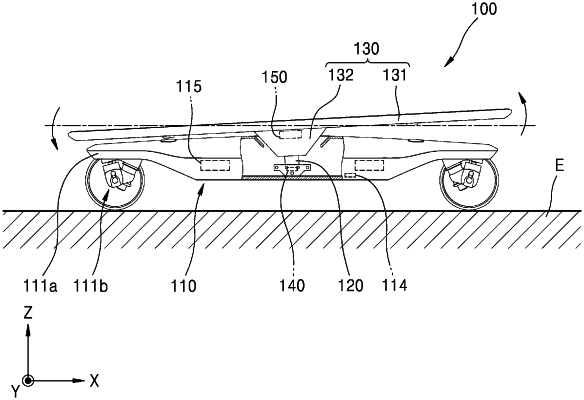| CPC A63C 17/12 (2013.01) [A63C 17/012 (2013.01); B62K 11/00 (2013.01); A63C 17/015 (2013.01); A63C 2203/12 (2013.01); A63C 2203/18 (2013.01); A63C 2203/24 (2013.01); A63C 2203/46 (2013.01); B62K 11/007 (2016.11)] | 11 Claims |

|
1. A personal mobility device movable on a surface, comprising:
a main frame;
at least one truck part coupled to and tiltable relative to the main frame;
at least one rotatable wheel connected to the at least one truck part;
at least one connection part connected to the main frame;
a tiltable boarding part connected to the at least one connection part and configured to enable a user to stand on the boarding part;
a first sensor provided on the main frame, the first sensor being configured to measure an inclination of the main frame relative to a horizontal plane;
a second sensor provided on the boarding part, the second sensor being configured to measure an inclination of the boarding part relative to the horizontal plane; and
a controller for calculating a difference between the inclination of the main frame and the inclination of the boarding part and determining an angular velocity of the personal mobility device based on the calculated difference in the inclinations.
|